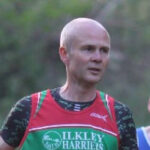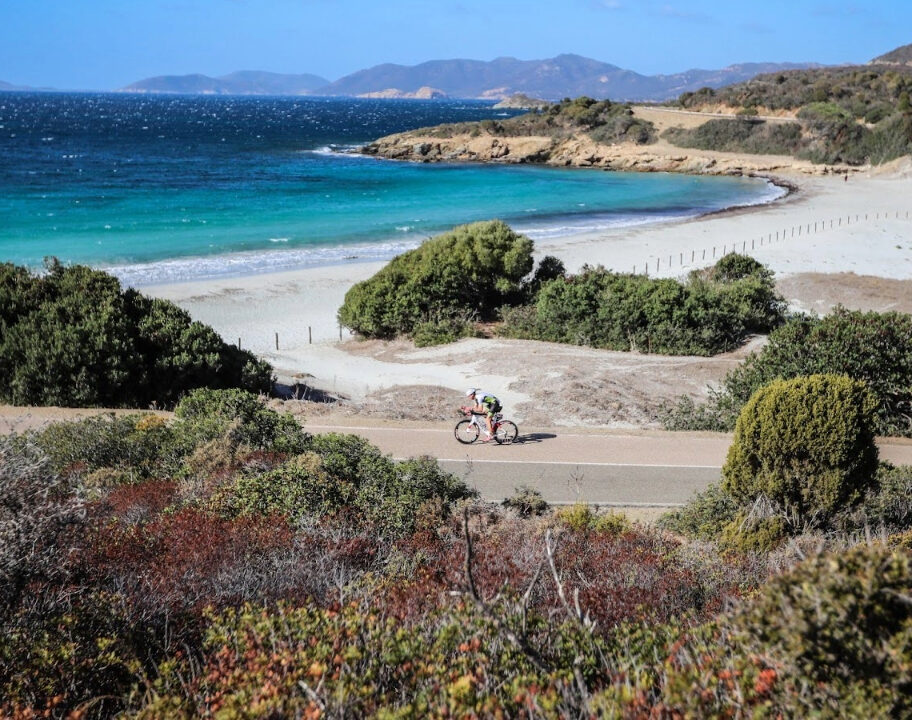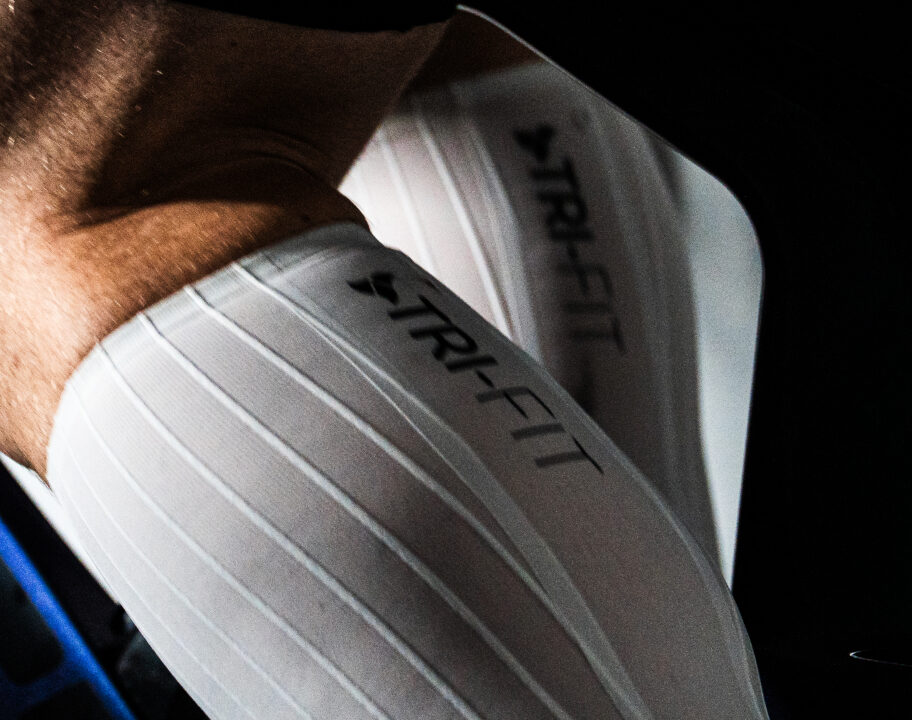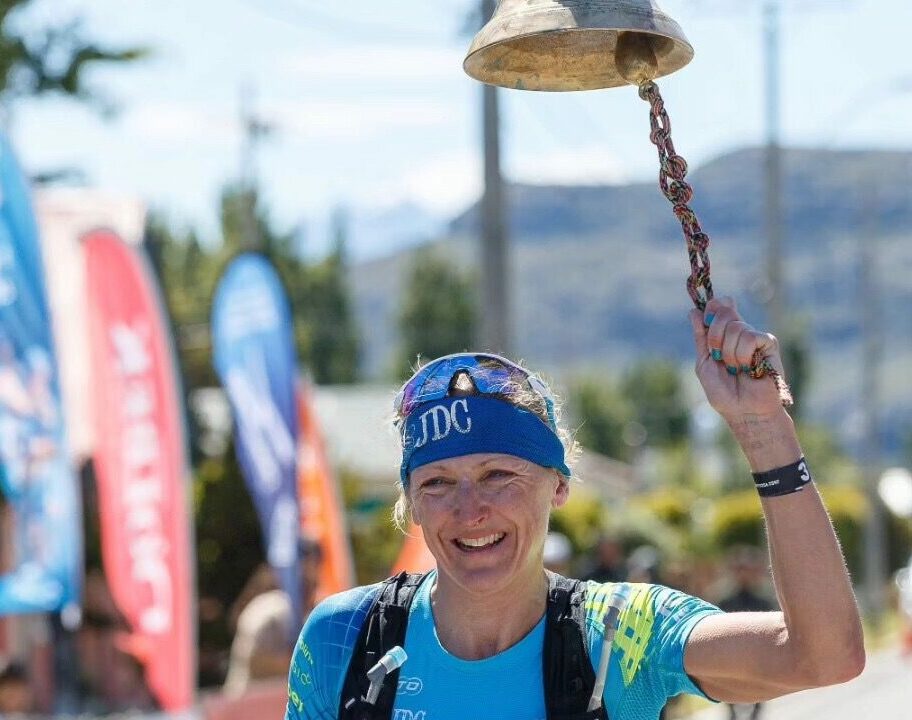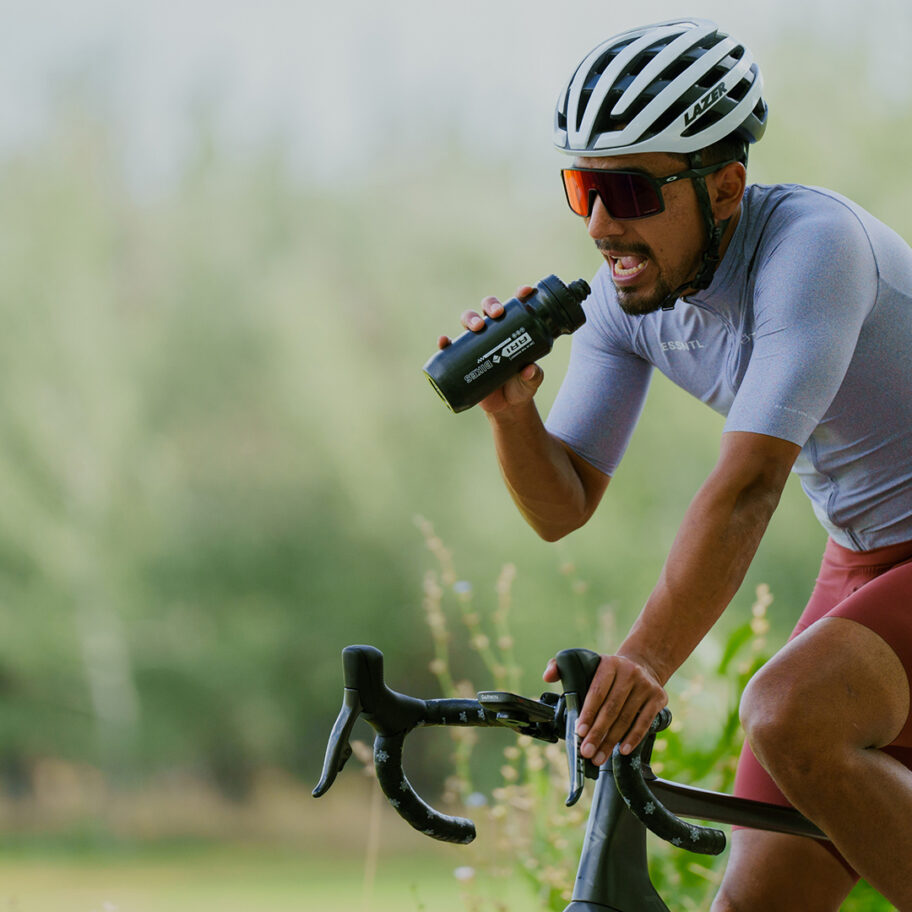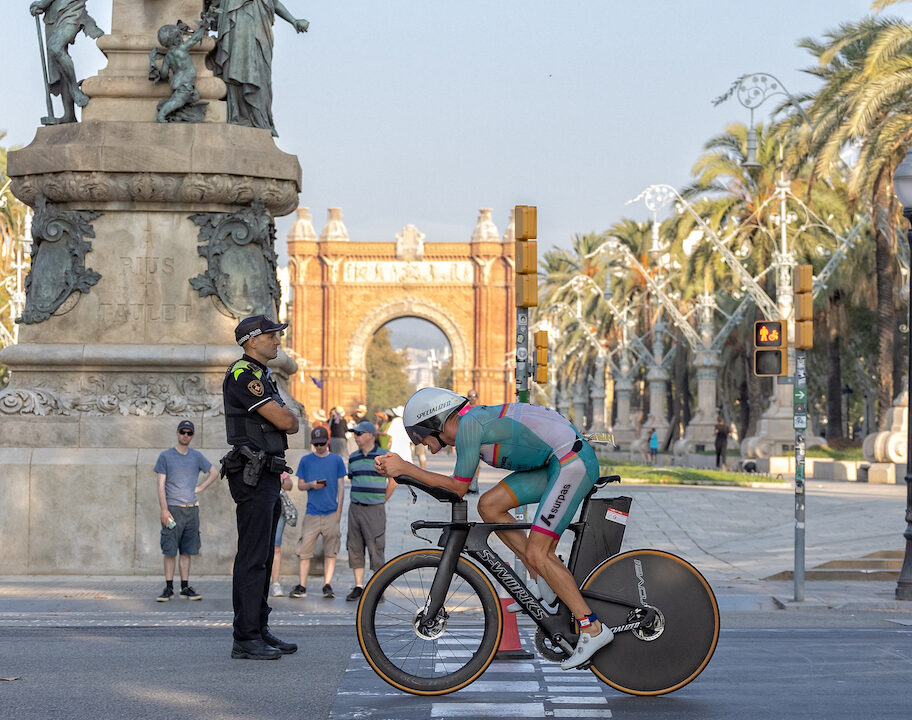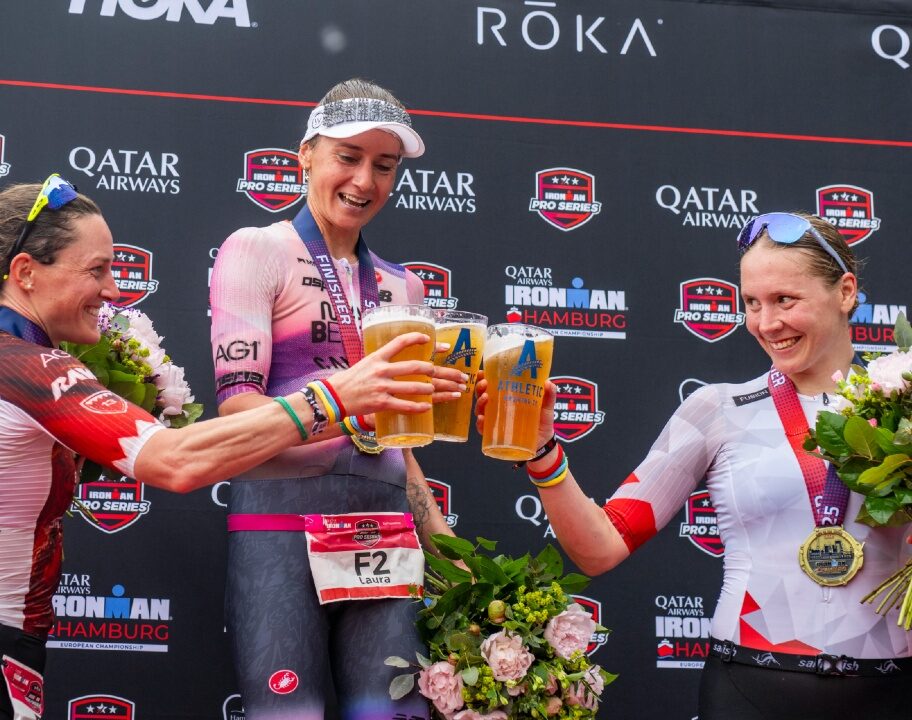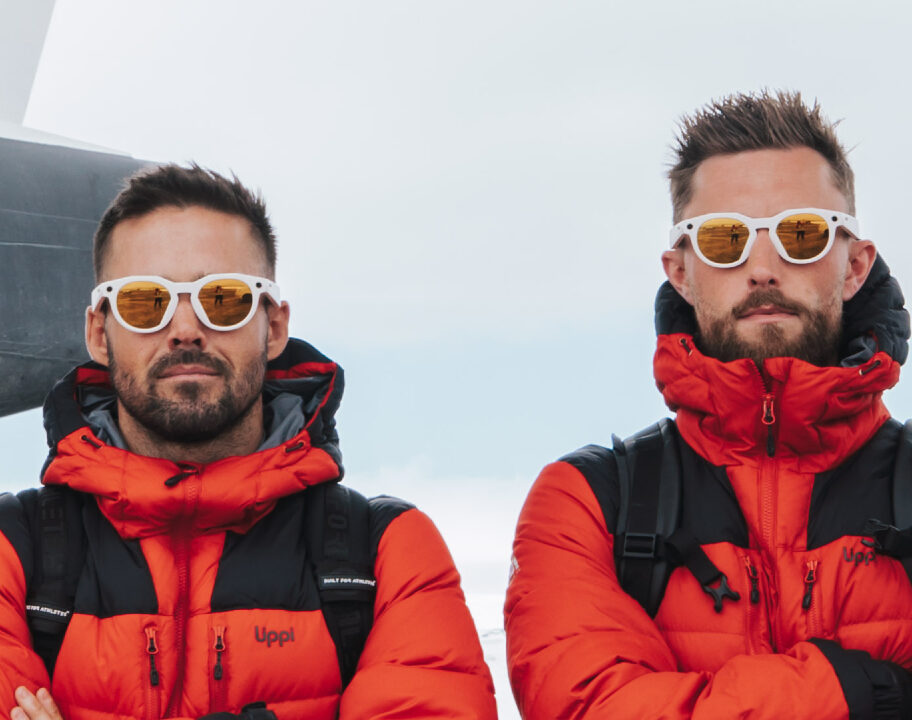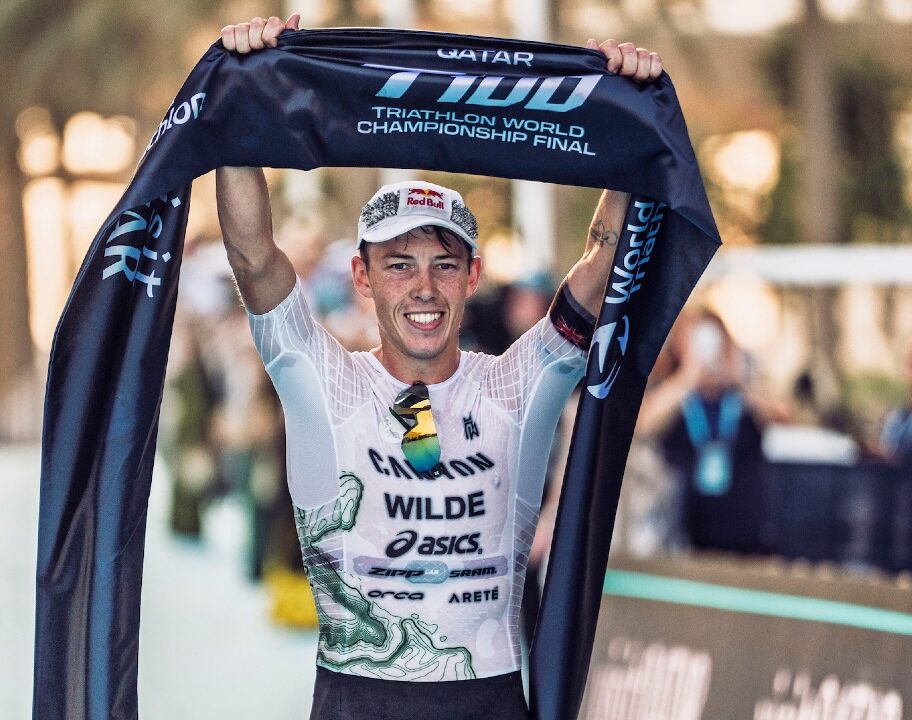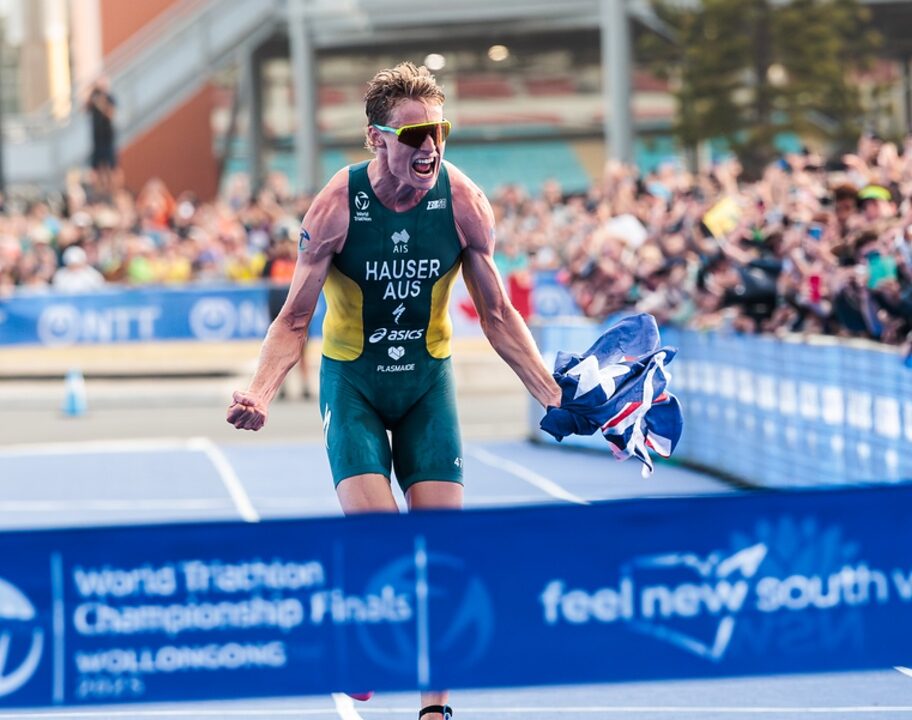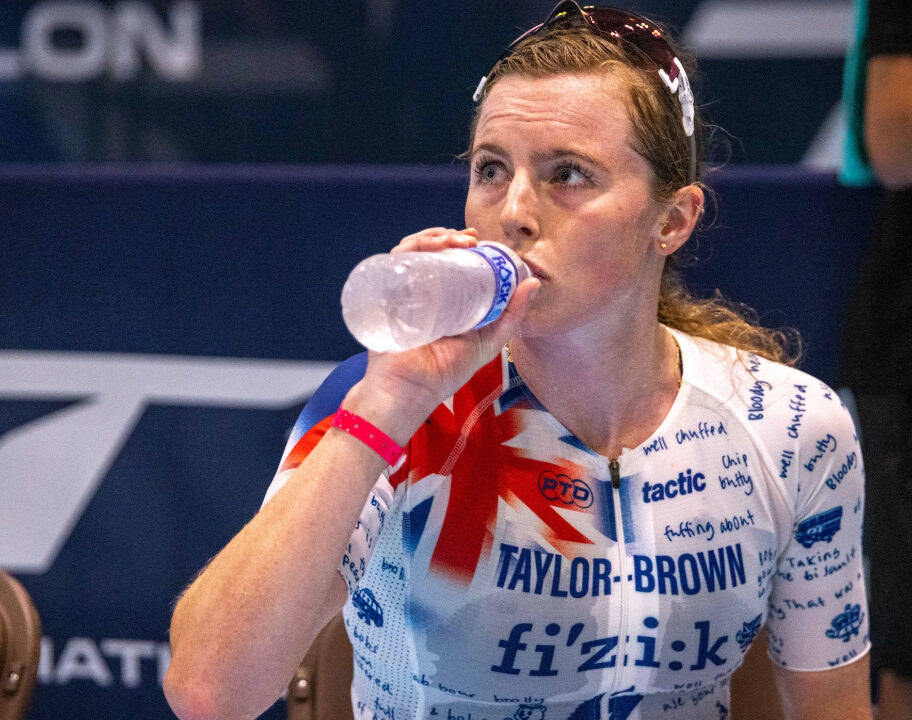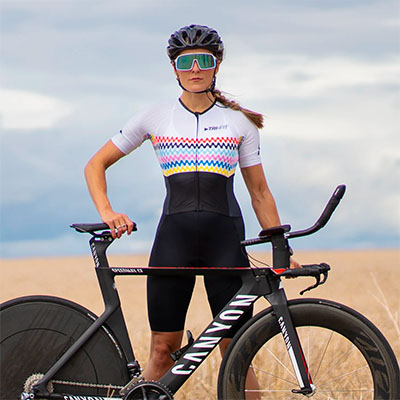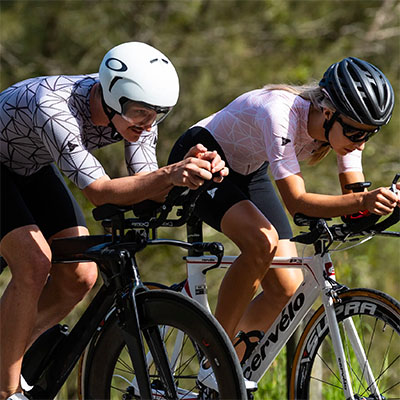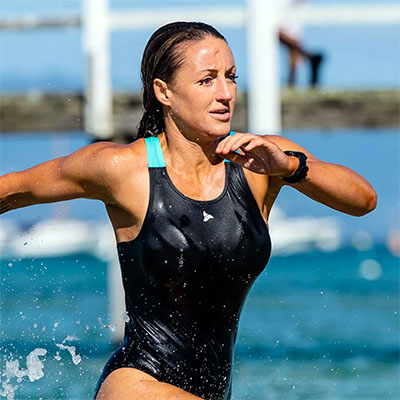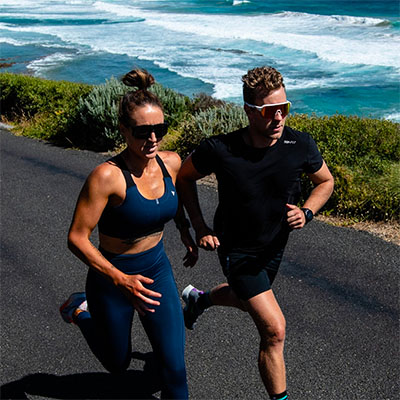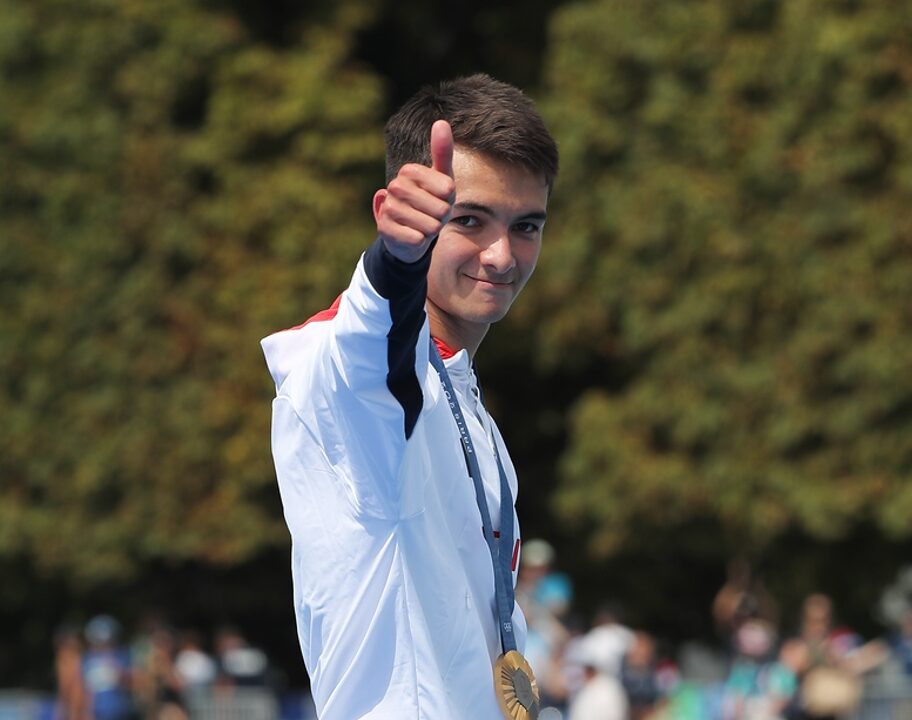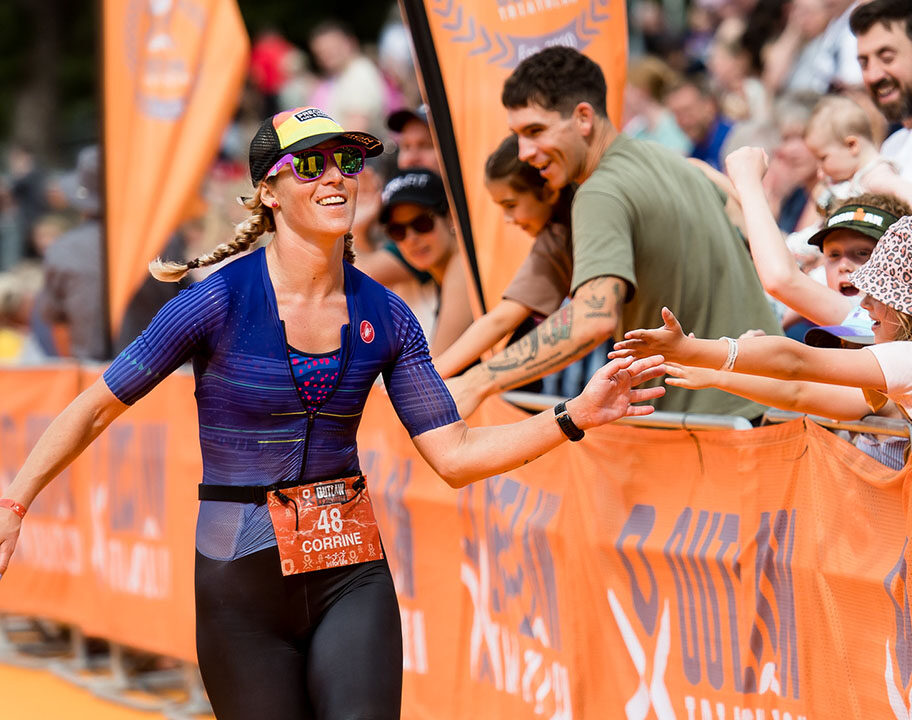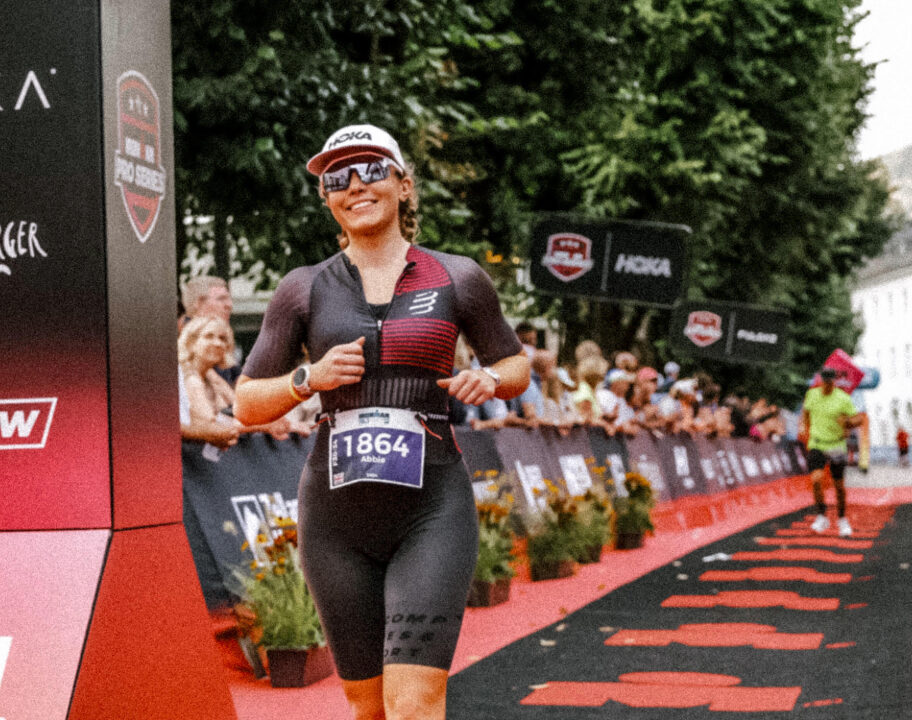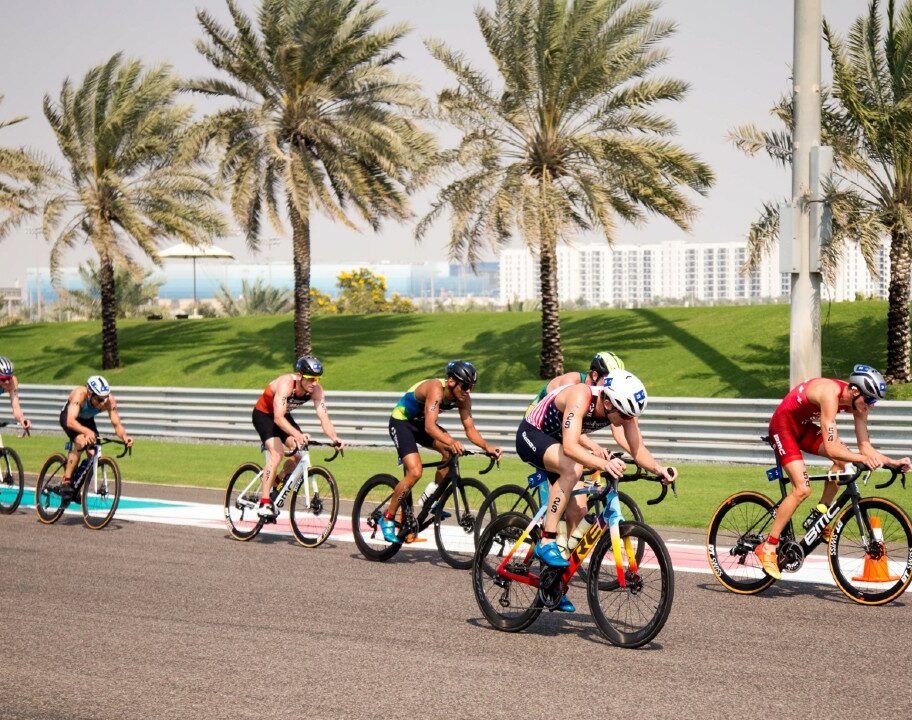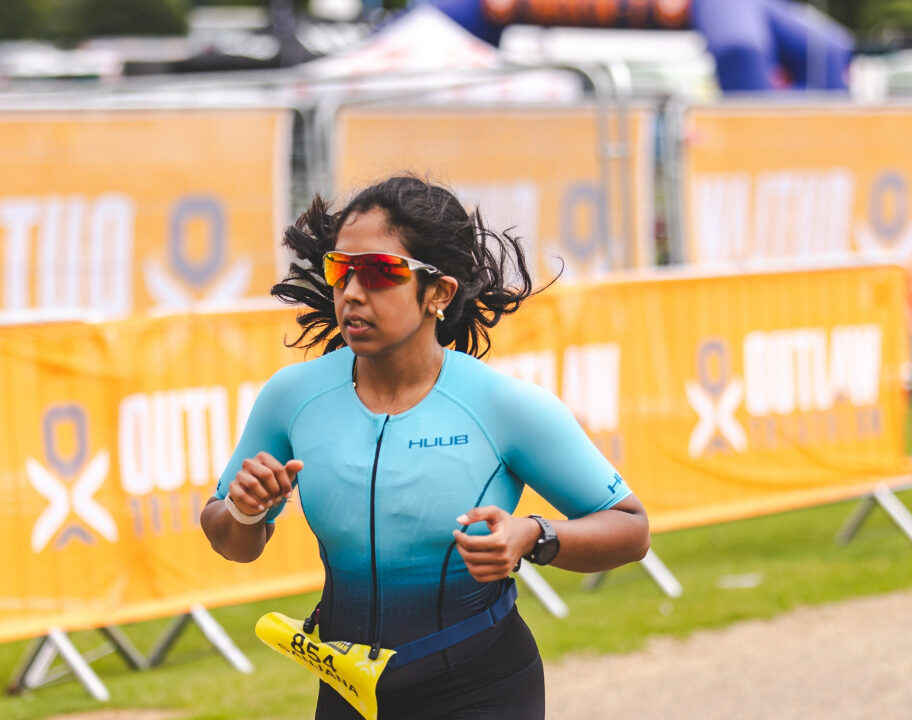Much has been written about ‘The Norwegian Method’ and the man largely behind it, Olav Aleksander Bu.
As coach to Kristian Blummenfelt and Gustav Iden, he helped them claim virtually every triathlon title that matters, from Olympic gold to IRONMAN World Champion.
It would be fair to say that 2024 didn’t hit anything like those heights – and we’ve discussed that with him here – but already we are starting to see a lot of the innovations they helped accelerate, under the Santara Tech banner, work their way to age groupers and a wider audience.
And we caught up with Olav recently to discuss some of the ones he feels will be key over the next couple of years.
Treat heat like altitude
The first of those is heat adaptation which has been developed in tandem with CORE and their sensor that measures thermal energy transfer between the body and the environment.
With the IRONMAN World Championship in Kona at the top of most age-grouper wishlists, there’s an obvious potential benefit to nailing that aspect of preparation.
But what does Olav believe has really advanced the ability to prep for those conditions? He put it as follows: “I think we’ve already progressed a lot on this in the space of not much more than one Olympic cycle.
“There are so many myths around heat and what you should do. I think most people got a shock when they came to Tokyo for the Test Event back in 2019. People melted and plenty didn’t finish.
“A lot of the issues stemmed from old established ‘truths’ and not necessarily what is best practice.
“So one of the analogies that I focussed on was that you have to utilise heat pretty much the same way that you do with altitude.
“If you’re going to race at altitude, you can’t be scared of altitude. It’s not like you would stay at sea level up until the day of the race and then expect to perform.
“Instead you need to be at altitude and let the body adapt. And that’s the unique thing with the body, humans are put together in a way that allows us to adapt to very extreme environments.
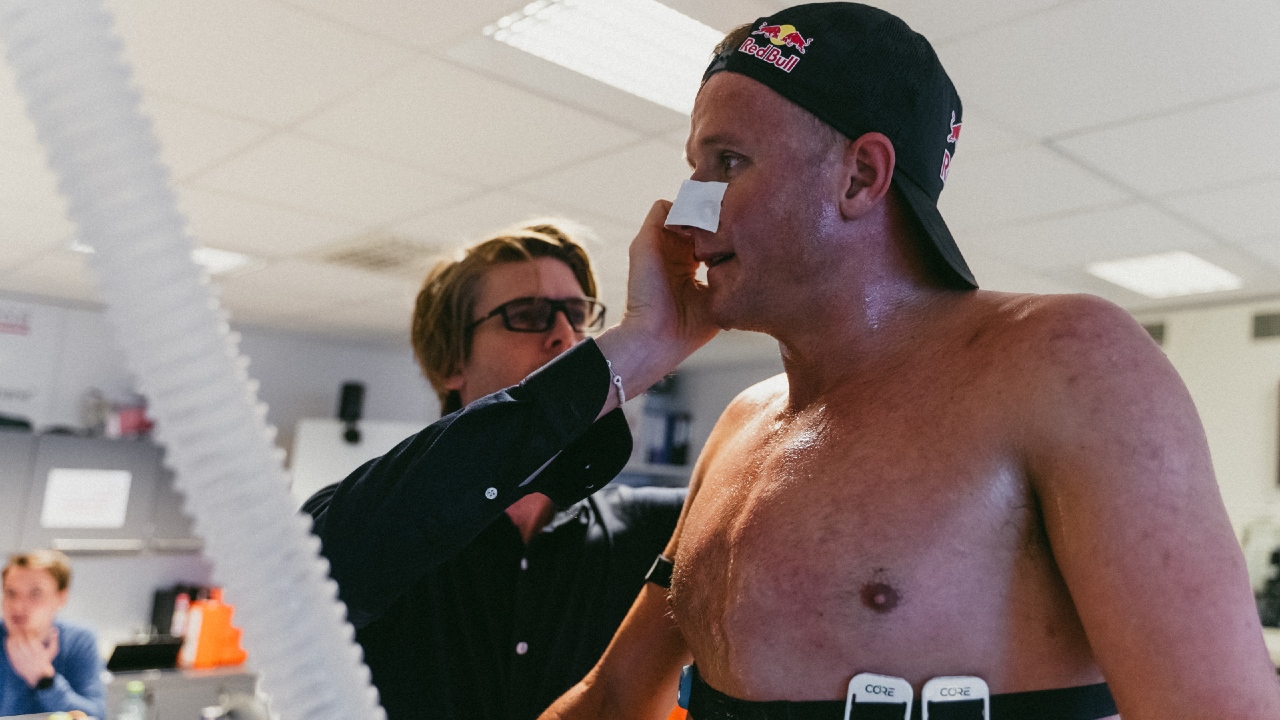
“Look at someone like Wim Hof [an extreme athlete dubbed ‘The Iceman’] who has set so many records in the sort of freezing temperatures where people would normally get hypothermia in a couple of minutes. He’s swimming for hours in those conditions.
“Of course you could argue that if you just expose yourself gradually to an environment over a long enough time, you will also adapt to it as well. So you don’t need a fancy protocol or anything like this. But on the other side, in elite sports, everything is about margins and you want to make the least compromises in approach. You want to optimise the programme so that it disrupts your training as little as possible.
“It is a tool that you want to use to improve certain characteristics and you want to put it at the right times of the season and integrate into your programme in a way that allows you to keep consistency as much as possible, or basically consistency where it needs to be.
“And it’s also easy for age groupers to overestimate their capabilities a little bit in the heat.
“Maybe one error that maybe age groupers do too often is that they go way too hard in the heat in the beginning, meaning you blow. You blow completely and you suffer.”
Not easy to nail nutrition
Next up is nutrition as another area where Olav believes there’s huge scope for pros and age-groupers alike to take some giants strides in the near future, though he warns it’s an incredibly complex subject.
He explains: “‘There is no velocity without power and there’s no power without calories’ is a quote I like and that just underlines the importance of nutrition.
“But nutrition is a field which is inherently difficult.
“You can obviously feel and see on race day the difference between fuelling properly and not fuelling properly. But we also have to remember that consistency in training also is heavily reliant on fuelling as well.
“That though is a place where people think you can get away with it because it’s not race day. You’re not necessarily being measured whether you do the training to the best of your ability – so it could mean you are underperforming a little bit.
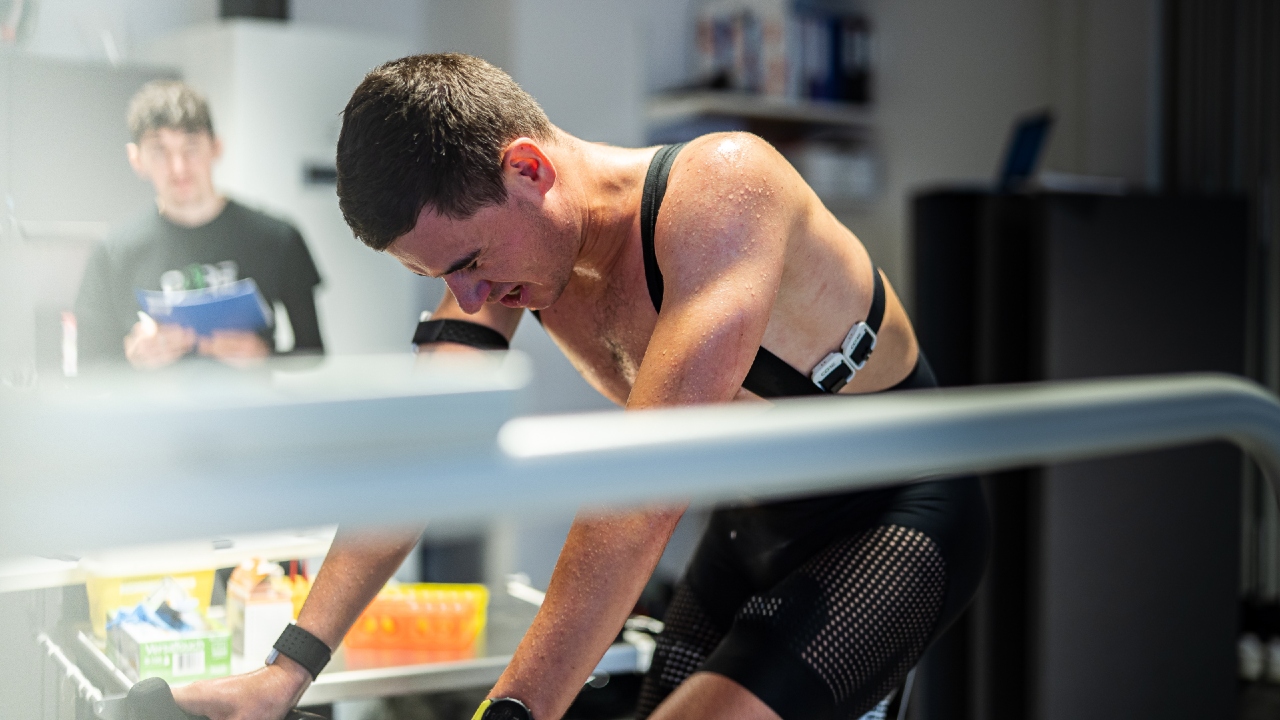
“And fuelling is still a place where there are a lot of debates about what’s right and what’s wrong.
“There’s a lot of science surrounding it, but you don’t always know how good the data really is. The biggest problem is that it’s still an inaccurate science in that it’s really hard to track the calories.
“But you never get answers to the questions that you don’t ask and there are more and more technologies out there which we know will help us do things far better. So I think more and more will have to happen in this field.”
Testing out in the field
In contrast to many grey areas around nutrition, Olav feels that measurements in the field in other areas has already led to far better and more robust data.
He said: “We’ve seen a large rise of portable metabolic analysers like VO2Master which can give us new insights that really can make a difference to performance and it’s definitely way more accessible to all nowadays.
“And things like Body Rocket to measure CdA is in many ways far better than going into a wind tunnel to work on aerodynamics.
“One problem in the wind tunnel is that you have far less idea about whether this is a natural position in the same way you find out on the road. And it’s often without any fatigue so you don’t know how sustainable the position really is and you don’t know how stable the position is. And then on top of that, the wind tunnel is very homogeneous and clinical environment.
“In contrast there’s a robustness to testing out in the field – we did that with the ‘Superman‘ position this year, especially for Gustav.”
READ MORE: Is this the end of wind tunnels? TRI247 test out the Body Rocket aero sensor
‘We need to be very humble’
And no discussion on tech advances would be complete without drilling down into whether Artificial Intelligence is the complete gamechanger many believe – indeed could it soon effectively replace coaches?!
It’s already prevalent in everything from training platforms through to feedback on Strava activities – though Olav thinks we’re a long, long way from it replacing human input.
He said: One thing that one have to be cautious about when talking about AI is that ‘AI’ today is the largest umbrella expression we basically have. People have all kinds of idea about what AI is, from the talk of it replacing humanity, through to just purely being an automated process.
“This is a place where most people are still in the dark, but AI for me, for the next five, 10, 20 years, it’s basically a place where you will lower the threshold for athletes and coaches to understand and utilise the data. So things become more decision centric rather than data centric.
“But it is a place where I can see there is a lot of frustration because everybody claims AI can do this or that.

“If we could make a perfect digital twin of ourselves today with the sensors that we had available, it would most likely have been solved already. So that’s where we need to be very humble and accept the fact that, well, the sensors have their flaws.
“The sensors are based already on third party data, even derived data, or – in the worst case – speculative data. That means basically that it’s a highly unregulated space where it’s hard to have a good overview of what really it is that we are measuring.
“We have to be aware of that from sensor standpoint or data standpoint. I would say that on a superficial level we only collect maybe 10 to 20% of what really is going on. And the last 80 to 90% of information that helps you make the right choices and building the consistency still comes and will come from the coach’s eye, their perception and so on.
“So the observations that we don’t capture with sensors are highly important for the success of a training programme.
“There’s no threat to a coach anytime soon because AI will really just make these coaches able to do more with the data than they have before – it’s the ability to utilise that data.
“It is not that AI will do it better than them, but it’s basically where if they combine their skills with AI, they can make more nuanced and better decisions than they currently can. So it’s fascinating.”

